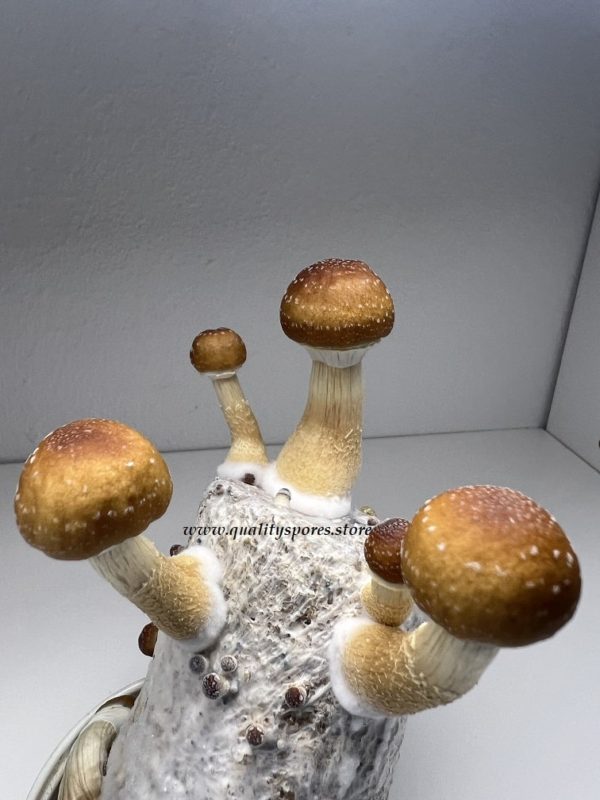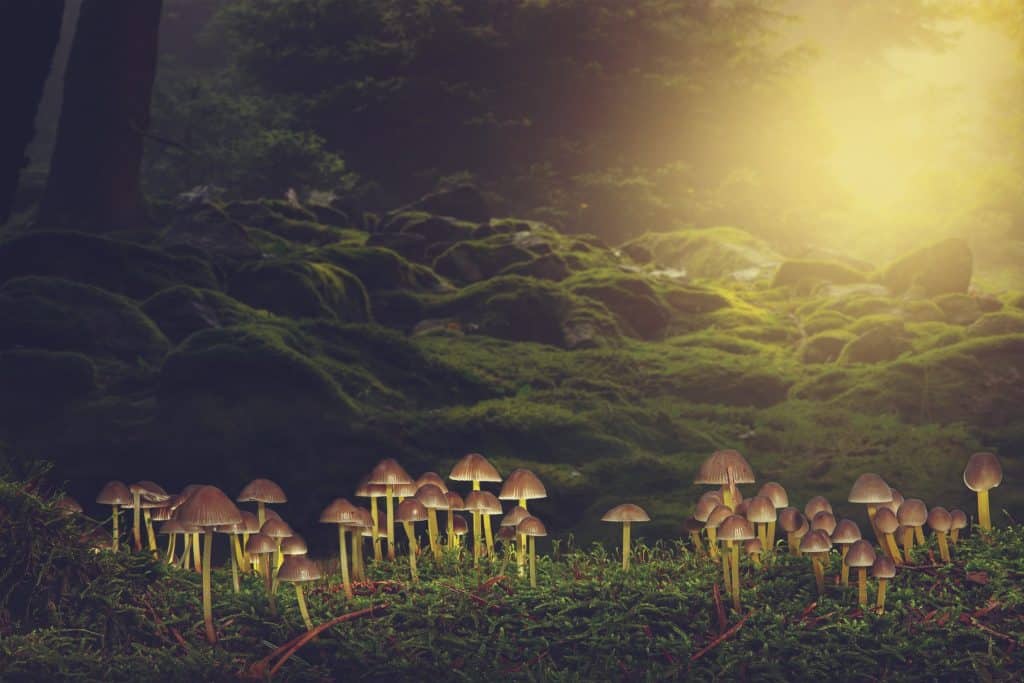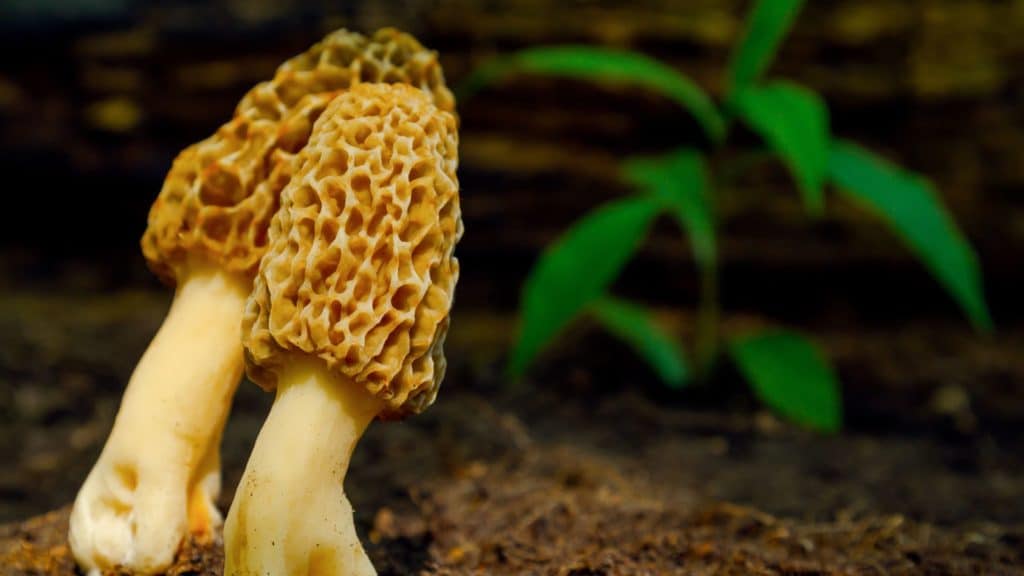Anyone with a little bit of experience in microscopy knows that cultivating mushrooms isn’t easy. Being careful and extremely clean is essential to the success of your mushroom supply, since mushroom spores are vulnerable to contamination at every part of the cultivation process.
In this article, we’ll discuss what contamination is, the most common types of contamination, and how it affects mushroom spores.

What Is Contamination?
In simple terms, contamination is the presence of anything unwanted in your mushroom spores. Mainly, this refers to impurities in the air, soil, and water. Unfortunately, contaminants thrive in the sterilized environment required for cultivating mushrooms thanks to the fact that there is no competition like there would be in nature.
The main problem with contamination is that it can cause long-term problems with your mushroom supply. Once any of these irregular substances is in your mushroom cultures, it can spread extremely quickly. In fact, contamination can sometimes be fatal to the whole culture. That’s why it’s best to get rid of the contaminated cultures immediately.
Most Common Types of Mushroom Contaminations
Mushrooms benefit from a very hygienic environment. But even in those conditions, contaminations can still occur. These are the three main types of contamination you could see in any mushroom supply.
Pests
Whenever you’re growing anything, pests can be a problem. Mushrooms are no different. Bugs can consume and infect fungi quickly, causing serious damage to a mushroom supply.
Fungus gnats are one of the most common threats to mushrooms. They consume the mycelium and can cause damage to the tissue of the mushroom. Often, they cause bacteria which leads to soft rot in the mushroom. In addition, some mites can harm mushrooms since they feed on fungi and can cause discoloration.
Some other mushroom pets include cecid flies, phorid flies, sciarid flies, and nematodes. Keeping the mushroom’s environment clean and storing them in an airtight area is the best way to prevent these pests from becoming a problem.
Mold
Mold thrives in a moisture-filled environment. Unfortunately, there are several common types of mold that affect mushrooms.
Cobweb mold is a fast-moving pathogen that grows quickly in humid conditions. Unfortunately, the color of this mold is only a little bit darker than your mushroom’s mycelium, which is why it is easily missed. The substance looks a lot like a typical cobweb and covers the fungi, causing soft rot.
Green mold is another one of the most common types of mold affecting mushrooms. As you might have guessed, it produces green spores. This mold also grows very quickly and causes soft rot.
Pink mold is also known as bread mold. It’s a very resilient type of mold that can grow in a number of different environments. It also has the ability to penetrate most materials.
Black mold is also known as Aspergillus. While you might expect it to always appear black, it can vary in color, even being yellow. This mold should always be treated with the utmost caution, since some varieties are poisonous.
Bacteria
Bacteria reproduces very quickly. One of the most common types of bacteria contamination is bacterial blotch. Yellow to brown spots on or near the edge of your mushroom caps can signal bacterial blotch in your mushroom spores. Bacteria spreads through airborne soil particles and generally happens when mushrooms remain wet for 4 to 6 hours after they’ve been watered. Identifying this is often straightforward as you’ll notice yellow and brown lesions near the edge of the mushroom’s caps.
Other Contaminations
Sour rot, also known as wet spot, can also be a problem for mushrooms. The slimy gray substance has a powerful odor that will be hard to miss. Dry bubble is another issue, which presents itself as deformed pinheads and tilted caps. Dry bubble comes from flies and dust particles.

Identifying Contaminated Mushrooms
Knowing how to identify contaminated mushrooms is vital, as they can often be saved if it is detected early enough. Most of the mold types are relatively easy to spot by sight alone. For example, cobweb mold has a distinctive, fluffy appearance. Other mold types will create various types of films that coat the mushrooms. When it comes to bacteria, the odor is one of the best ways to identify it. Most mushrooms contaminated with bacteria will have a very strong, foul odor. They may also have a sludgy gray liquid covering the mushrooms. Finally, insects are probably the easiest contamination to identify. If you ever see bugs on fungi, that is a clear indication that the area is not airtight.
In addition, since mushrooms are completely white, the presence of any other colors typically signals contamination. However, there are a couple of exceptions. If you see the color blue, this could indicate bruising on the mushroom’s mycelium. If you see the color yellow, that could indicate that the mycelium is getting old and is trying to defend itself against bacteria.

Avoid Contaminated Mushroom Spores by Purchasing from Quality Spores
Those in microscopy who are looking for the best mushroom spores, including golden teacher spores, should visit our store. Qualityspores.store is unique because we offer mushroom spore syringes that come in a sterile solution. Plus, we test each and every syringe to confirm that there is no contamination before we ship the product from our warehouse. This is great for our customers as it saves time and money. You will not have to worry about testing the product yourself or sending contaminated spores back. Very few of our competitors offer this! Purchasing from Qualityspores.store is the best option if you want the best in quality, freshness, authenticity, potency, and overall customer service.
